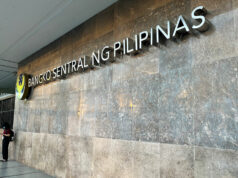THE Department of Energy has set new renewable energy (RE) targets in its latest version of the National Renewable Energy Program (NREP), with RE expected to account for more than half of the Philippines’ power mix by 2040, officials said.
“[The updated NREP proposes RE targets of] 55.8% by 2040, and 37.3% by 2030” in terms of overall share of power generated, Senator Sherwin T. Gatchalian, who chairs the Senate Committee on Energy, told BusinessWorld in a video call over the weekend.
Mr. Gatchalian said he learned about the new targets in a Friday briefing with officials overseeing the NREP, noting that the ultimate targets are subject to public consultation to be conducted “soon.”
The current NREP covering 2011 to 2030 hopes to bring the share of RE to 35% by the end of that period.
The NREP sets the road map for achieving the Philippines’ RE goals as required by the Renewable Energy Act of 2008.
The latest plan, Mr. Gatchalian said, looks at natural gas to play a big role in accelerating the development of renewables.
“The more RE that will be injected in our system, the more natural gas we need to balance it. Natural gas is quick-response, so it can compensate for the intermittency of RE. So in their modelling, in NREP, natural gas is a very important component of that plan,” the lawmaker said.
National Renewable Energy Board (NREB) Chairperson Monalisa C. Dimalanta confirmed the details in a mobile message Saturday.
She said the planning team used a capacity planning software which set the current 35% RE target as a floor, which she called a “hard constraint” in preparing the new plan.
“The model showed us we could (exceed) 37% RE share by 2030,” she told BusinessWorld.
“The results also showed this increase in RE share is supported by higher flexibility in the system coming from natural gas plants all the way to 2030, with slight decline by 2040,” she added.
Ms. Dimalanta said that in order to bring RE’s share higher, the Philippines needs to aggressively ramp up its renewable portfolio standards program, which requires distribution utilities to source an agreed portion of their supply from eligible RE facilities.
The NREB recommends an increase in the minimum level of electricity contracted from RE developers to 2.5% from the current 1%.
She added that energy regulators are thinking of releasing the updated NREP during the first quarter, with a public consultation scheduled to be held this month. — Angelica Y. Yang



